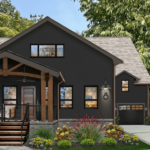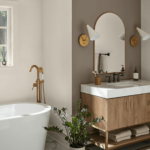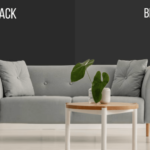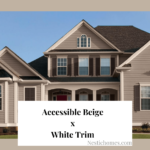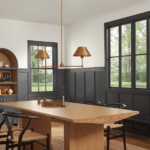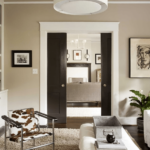Last updated on September 5th, 2025 at 01:40 pm
Undertones of Natural Tan SW 7567
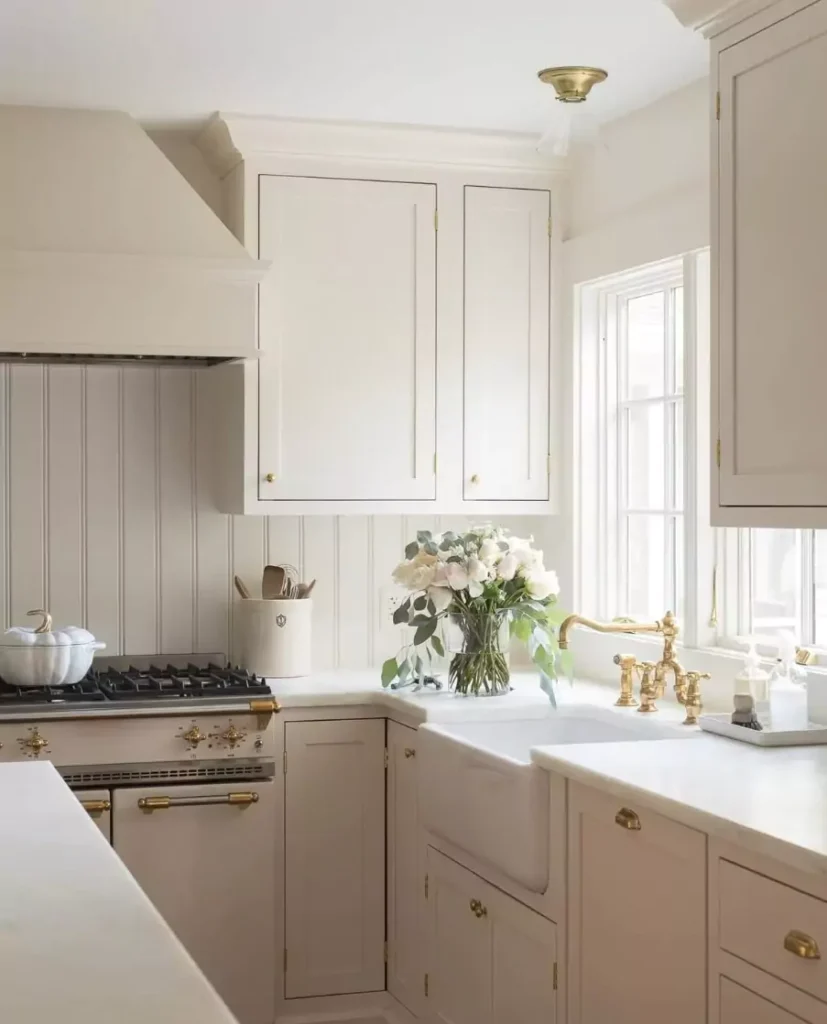
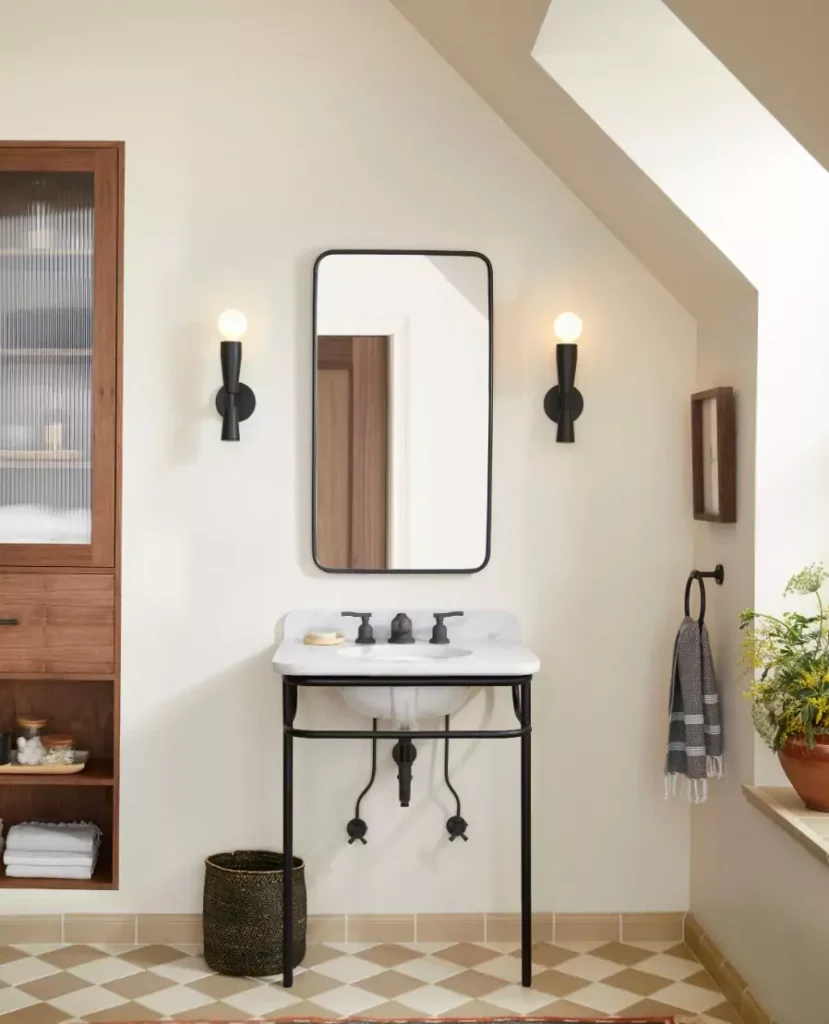
Sherwin-Williams Natural Tan is a warm neutral with very subtle hidden hues. It carries a slight green-gray undertone, which keeps the color from looking too yellow or golden.
In practice, Natural Tan usually reads as a soft beige – the green-gray hint is often hard to notice unless you compare it side by side with other tans.
In bright light this undertone almost vanishes, making Natural Tan look like a simple warm tan; in cooler light the gray-green undertone can show through more strongly.
This balance of warm (tan) and cool (green-gray) undertones makes Natural Tan a very adaptable neutral that avoids looking overly warm or washed out.
Ashen Tan 996:Benjamin Moore-Reasons Why its PERFECT Choice
LRV of Natural Tan SW 7567
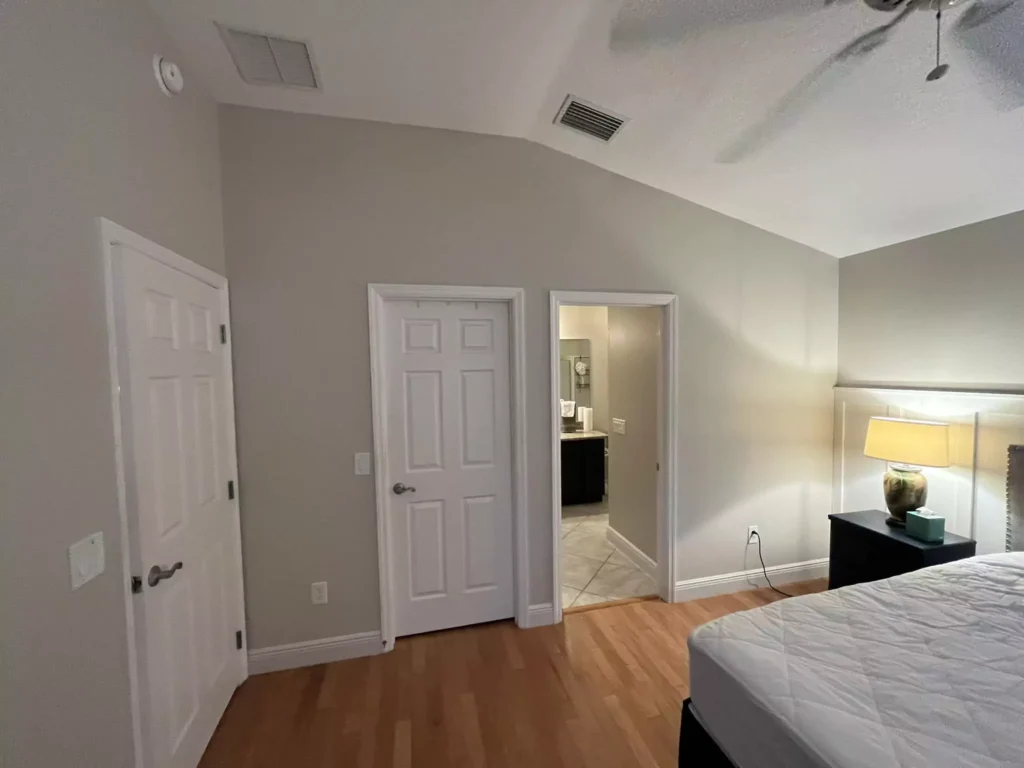
Light Reflectance Value (LRV) measures how much light a paint color reflects on a scale from 0 (black) to 100 (white). Natural Tan has an LRV of 65, which classifies it as a fairly light paint.
A higher LRV means the color will bounce more light, so rooms painted Natural Tan will feel brighter and more open. In practice, an LRV of 65 means Natural Tan is light enough to keep sunny rooms from looking washed out, yet dark enough to feel warm and grounded in dimmer spaces.
Because of this, Natural Tan often hits the “sweet spot” for interior spaces: it reflects plenty of light (keeping rooms bright) but still shows its beige warmth on the walls.
Tan vs Beige: Which One You Should Choose for Your Home?
Appearance in Different Lighting
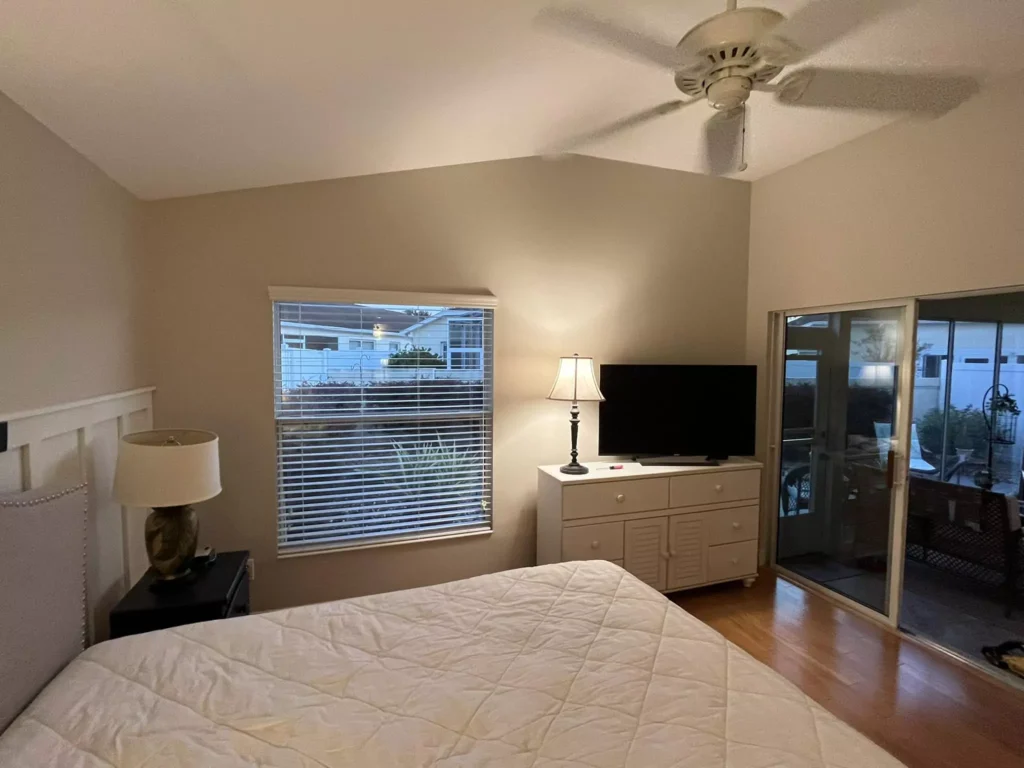
Natural Tan’s undertones and brightness shift with different lighting. In natural daylight, orientation matters: north-facing or shaded rooms (cool, indirect light) tend to bring out the green-gray side of the color, making the tan appear a bit grayer or muted.
Conversely, rooms with lots of warm southern or west afternoon sunlight draw out Natural Tan’s warmth and subtle yellow undertones. Under warm artificial light (incandescent or warm LEDs), Natural Tan looks cozier and more golden-beige – the warm light highlights its yellowish warmth.
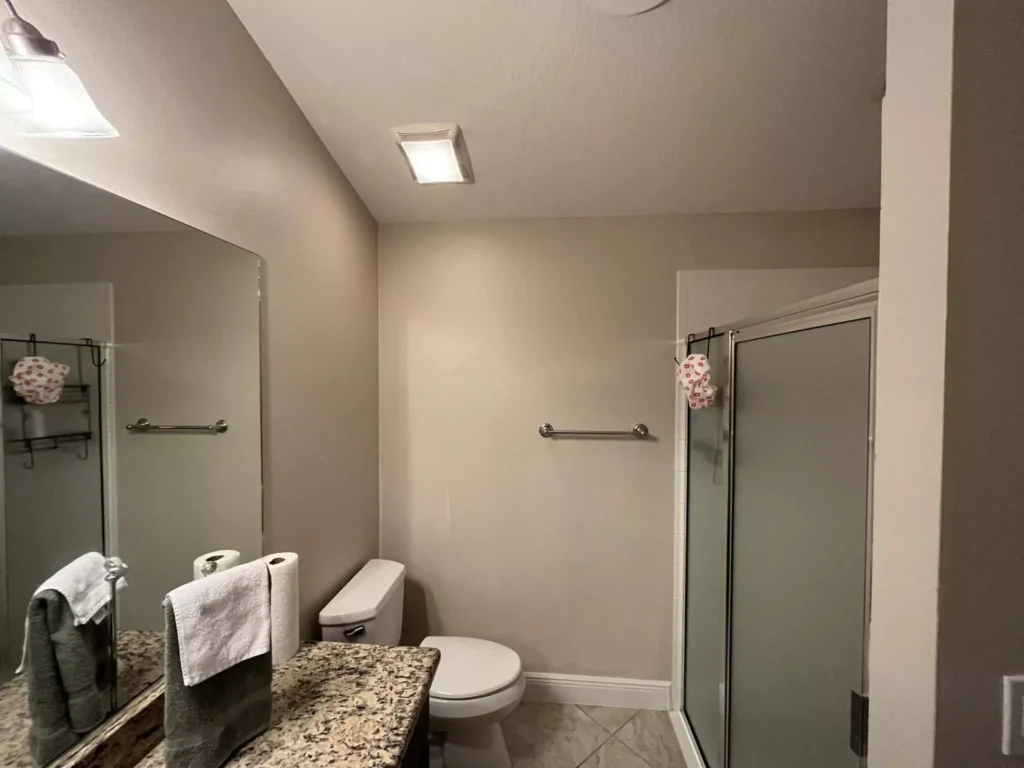
Under cool artificial light (cool LEDs or fluorescents), it can take on a cooler cast – the gray-green undertone becomes more apparent and the color reads more muted.
In summary, Natural Tan is a very forgiving neutral, but in very cool light it can look slightly grayish, whereas in sunny or warm light it reads as a gentle, creamy tan.
Room by room comparison
Bedroom
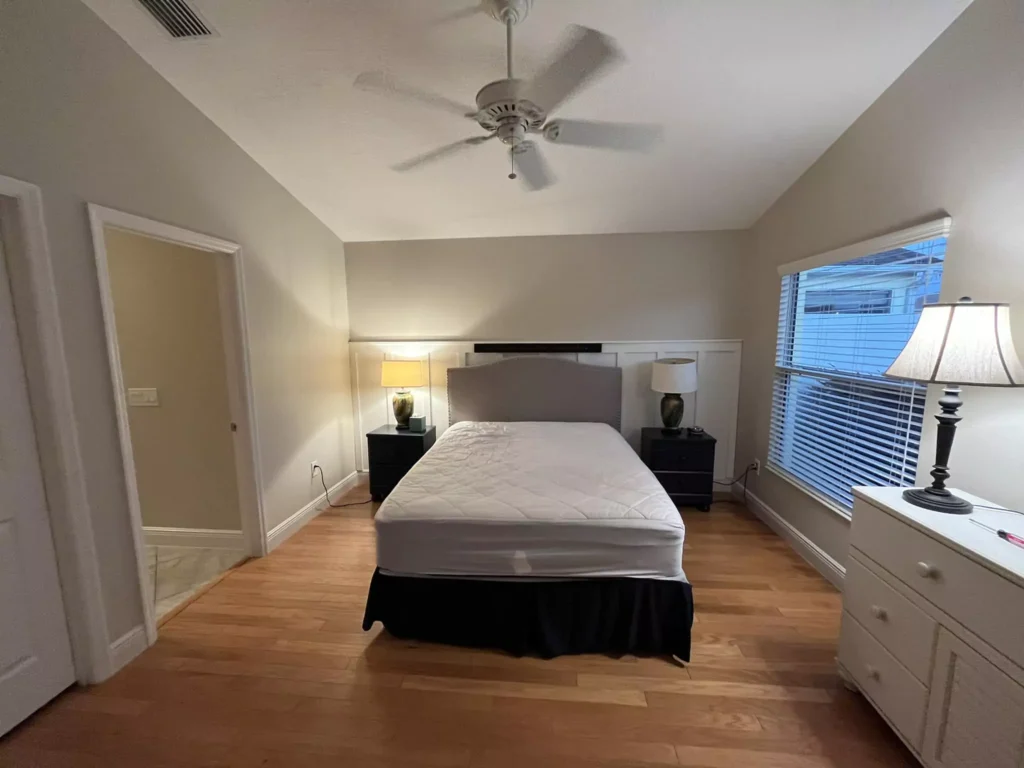
A bedroom painted in Natural Tan feels calm and cozy. The color’s warmth and neutrality create a soothing retreat – it won’t overpower soft furnishings or decor.
For example, using crisp white or ivory bedding with Natural Tan walls yields a spa-like, tranquil vibe. You can also add color accents (throw pillows, art or curtains) in soft pastels or even jewel tones – Natural Tan pairs beautifully with dusty rose, sage green or navy blue in pillows and textiles.

Because it’s not too bold, Natural Tan makes warm wood furniture (like oak or cherry) pop nicely without clashing. Overall, in a bedroom Natural Tan promotes relaxation and works well with soft whites, creams or gentle pattern fabrics for a cozy, layered look.
Kitchen
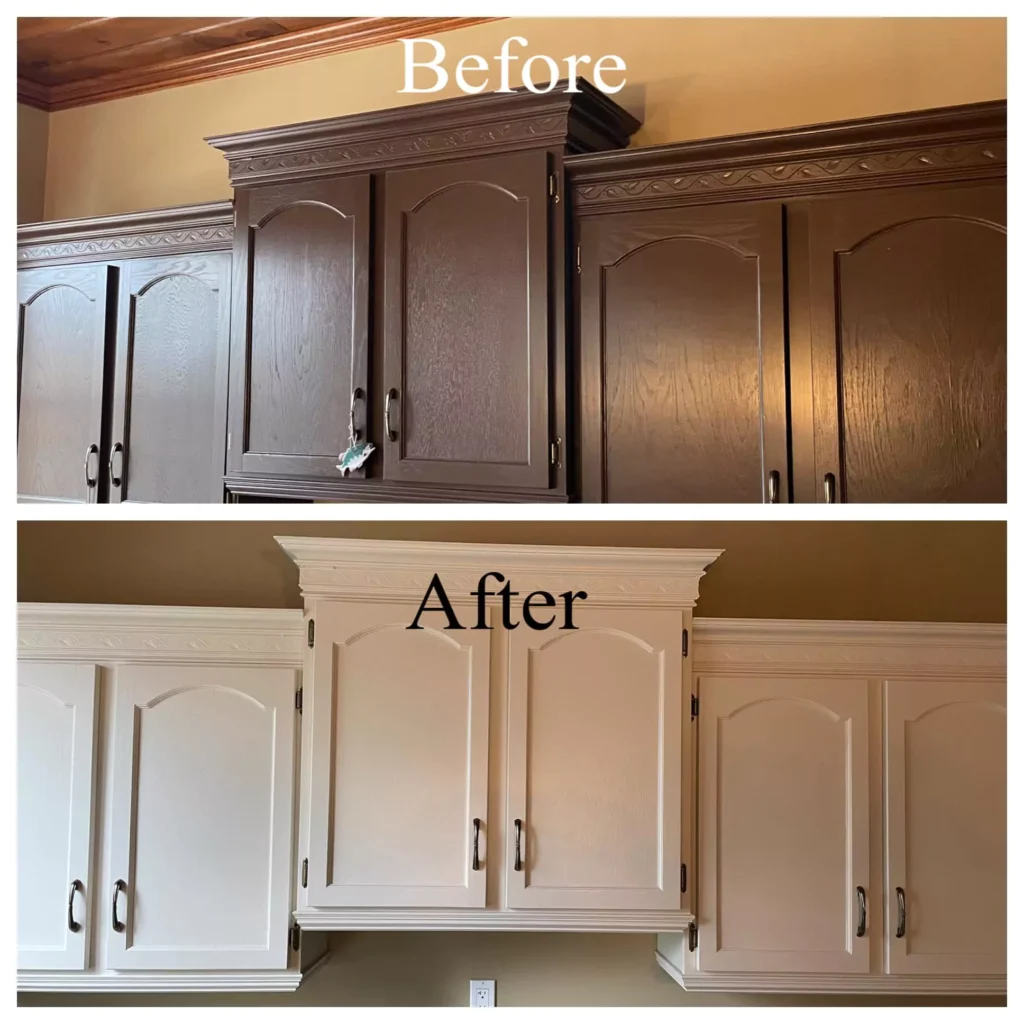
In the kitchen, Natural Tan brings a warm, inviting atmosphere. It works well on walls or cabinetry because it balances earthy warmth with brightness.
For example, pairing Natural Tan walls with white subway tile, brushed-nickel appliances and medium wood countertops creates a classic, timeless feel. It also looks attractive on painted cabinets: in one kitchen the contrast of Natural Tan cabinets, warm wood chairs and white accents gave a “cozy and clean” vibe.
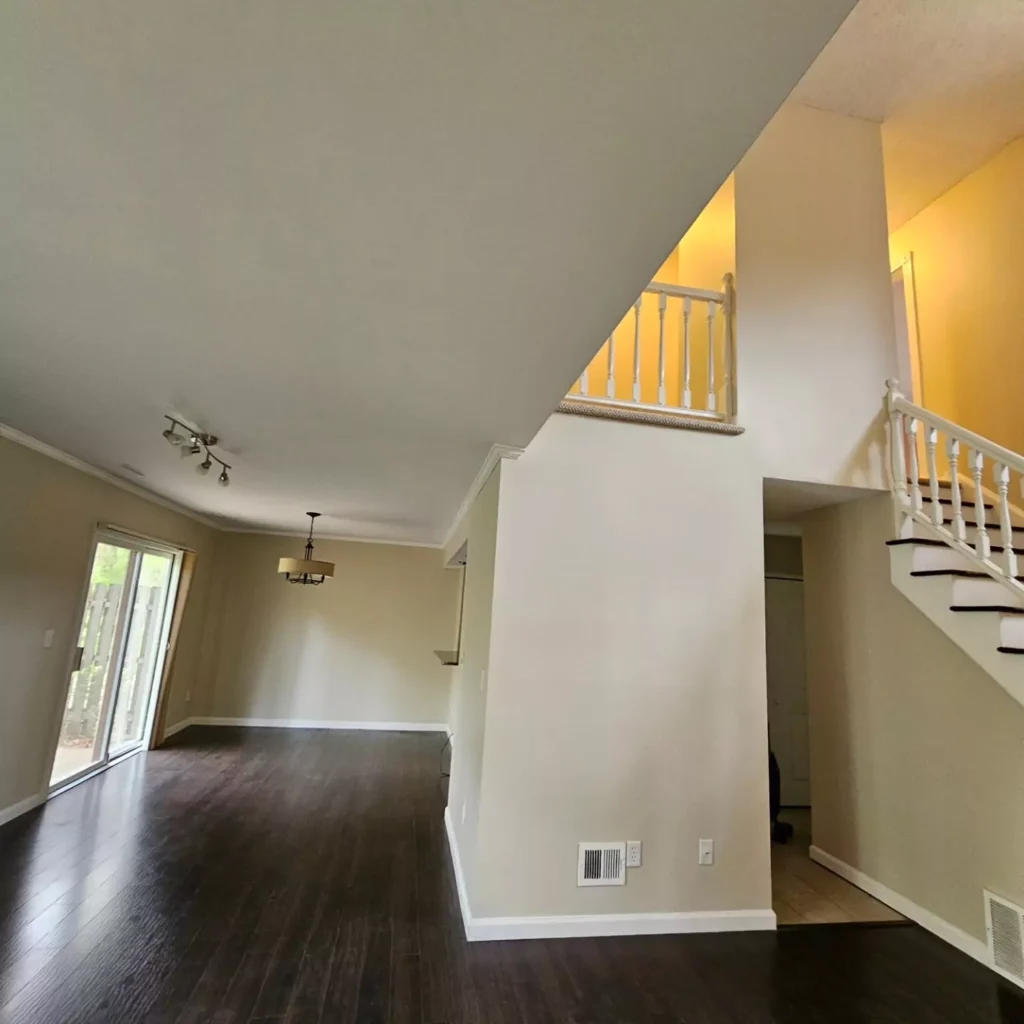
This color complements natural materials – think marble or quartz countertops in gray/white, and stone or subway backsplash in crisp white. In darker kitchens, Natural Tan’s LRV helps keep the room bright; in sunnier kitchens, its subtle warmth prevents the space from feeling sterile.
Living Room
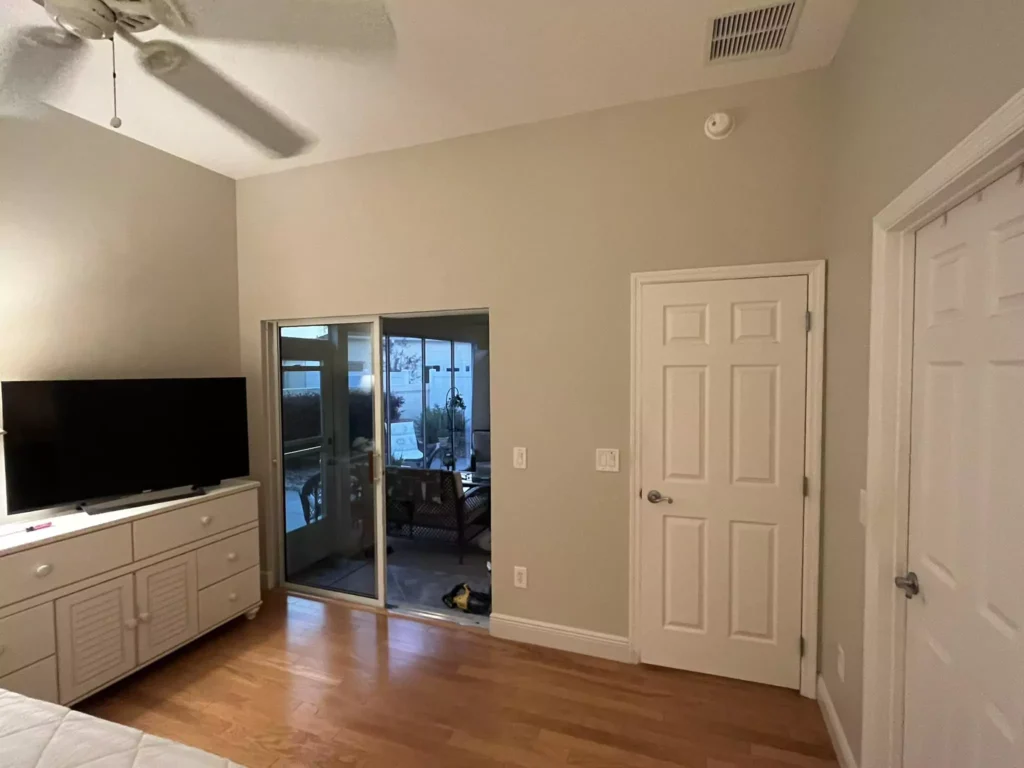
Natural Tan creates an easygoing, comfortable mood in living rooms. It works like a warm beige backdrop that welcomes both warm and cool accent colors.
For example, you could use Natural Tan on all walls and add pops of color with throw pillows or art in deep teal, olive green or slate blue – these richer hues look striking yet harmonious against the tan.
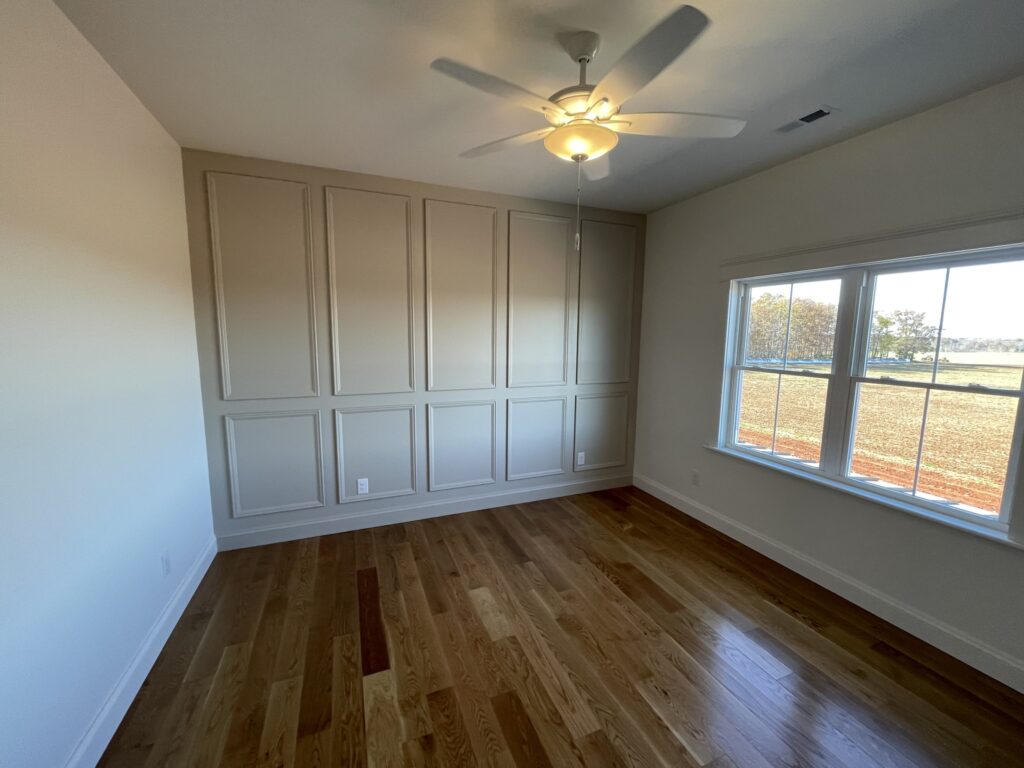
Wood trim, leather furniture and woven fabrics (like a jute rug) all coordinate nicely, enhancing the casual warmth. Because Natural Tan is fairly light, a south-facing or well-lit living room will feel spacious; in a north-facing or dimmer room it will feel calm and grounded rather than drab.
Textured creams and warm grays on sofas or drapes also blend seamlessly, so Natural Tan lets you style a living space that feels both inviting and sophisticated.
Bathroom
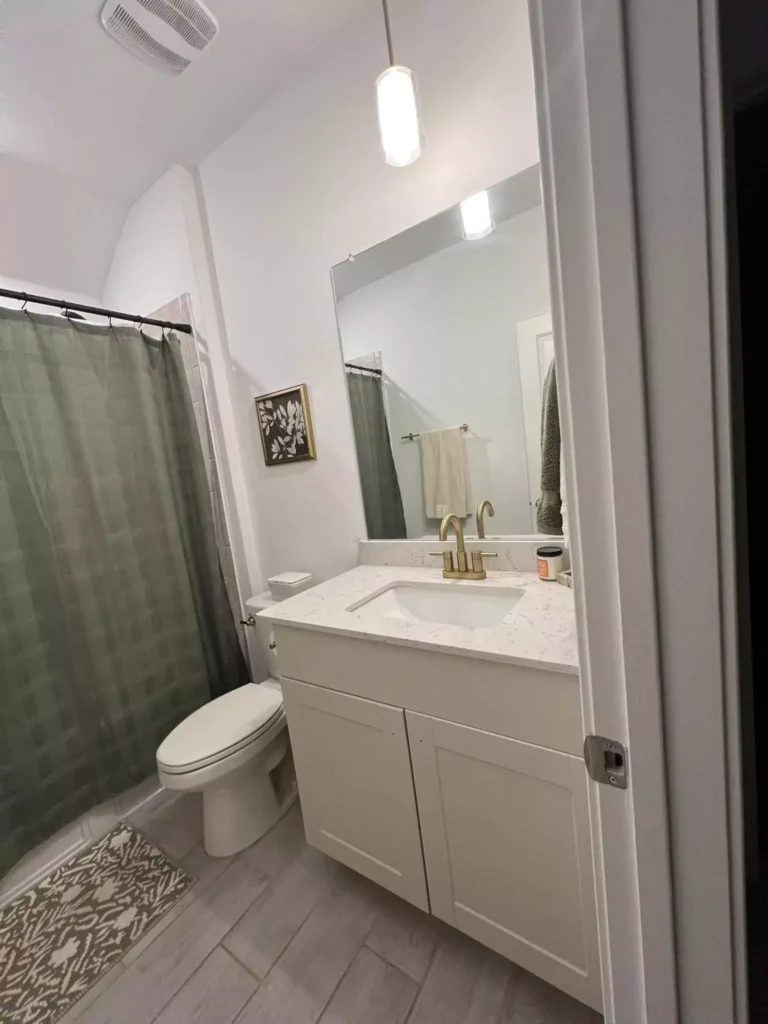
In a bathroom, Natural Tan can actually help brighten the space while adding warmth. Its LRV (65) means it reflects a good amount of light, especially when paired with white or light-colored tile and good overhead lighting.
In practice, Natural Tan on the walls will look clean and creamy next to white fixtures (vanities, trim or porcelain fixtures) and metallic finishes (chrome or brushed nickel). Even small bathrooms can feel open, because the color is light enough not to overwhelm the space.
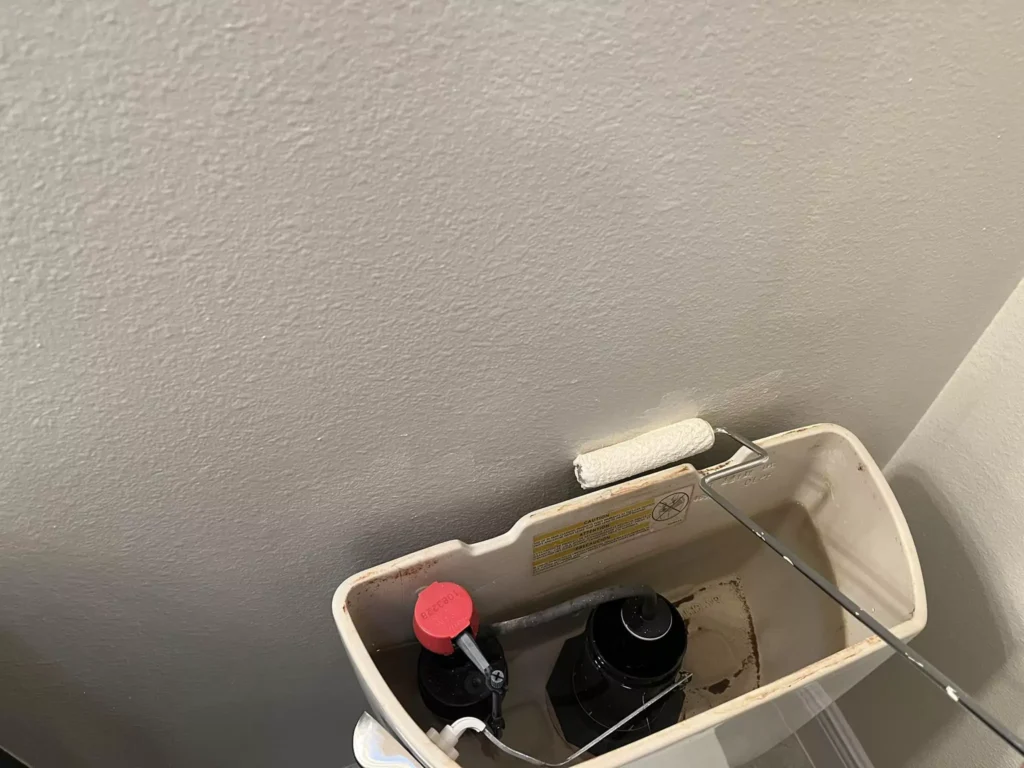
(In very low light or small windows, Natural Tan may read grayer, so bright task lighting is helpful.) Overall, Natural Tan in a bathroom gives a gentle, spa-like quality – it harmonizes with neutral tile tones (soft gray, beige or off-white) and makes the room feel warm yet airy.
Cabinets
Using Natural Tan on built-in cabinetry (kitchen or elsewhere) creates a cohesive, custom look. In kitchens and home bars, Natural Tan cabinets paired with a contrasting island or countertop bring visual interest.
For example, the image above shows Natural Tan cabinet paint with a white quartz counter and stainless appliances – the color keeps the space warm and ties in the wooden bar stools.
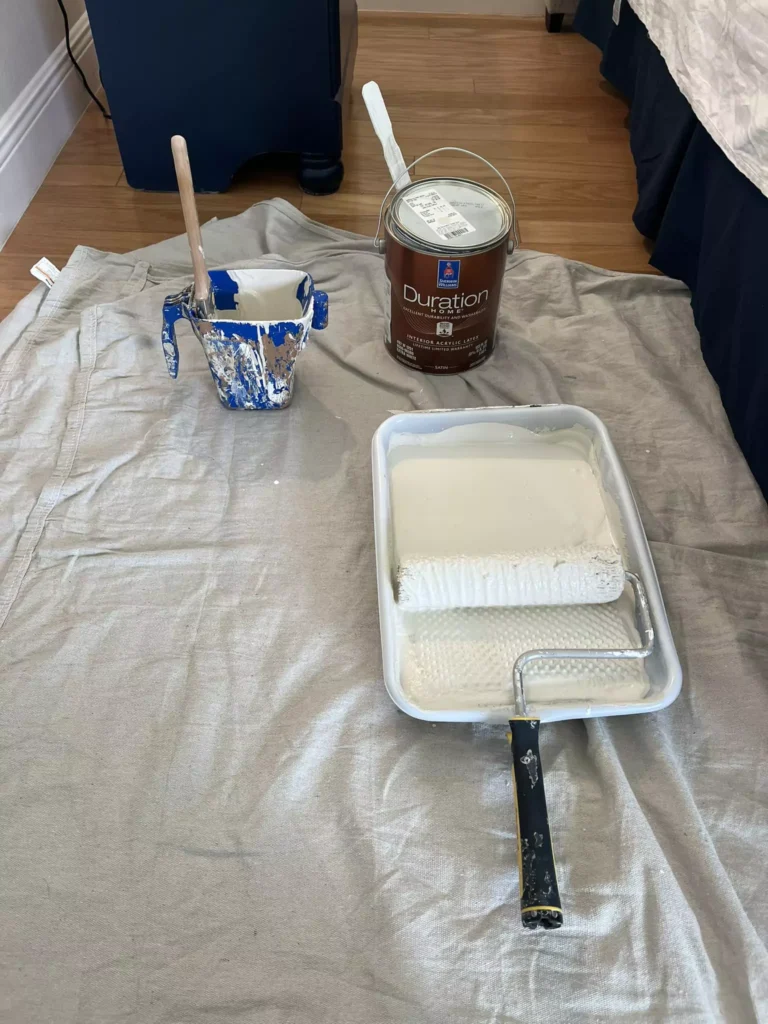
As one source notes, the contrast between Natural Tan cabinetry and wood furniture “creates a cozy and clean vibe” in the kitchen. The warm neutrality of Natural Tan also works well in bathroom or closet cabinetry, especially with chrome hardware and light quartz or granite countertops.
Because it’s on the lighter side, cabinets in Natural Tan won’t make a small kitchen feel dark; instead they add subtle warmth without overpowering the room’s overall style.
Exterior
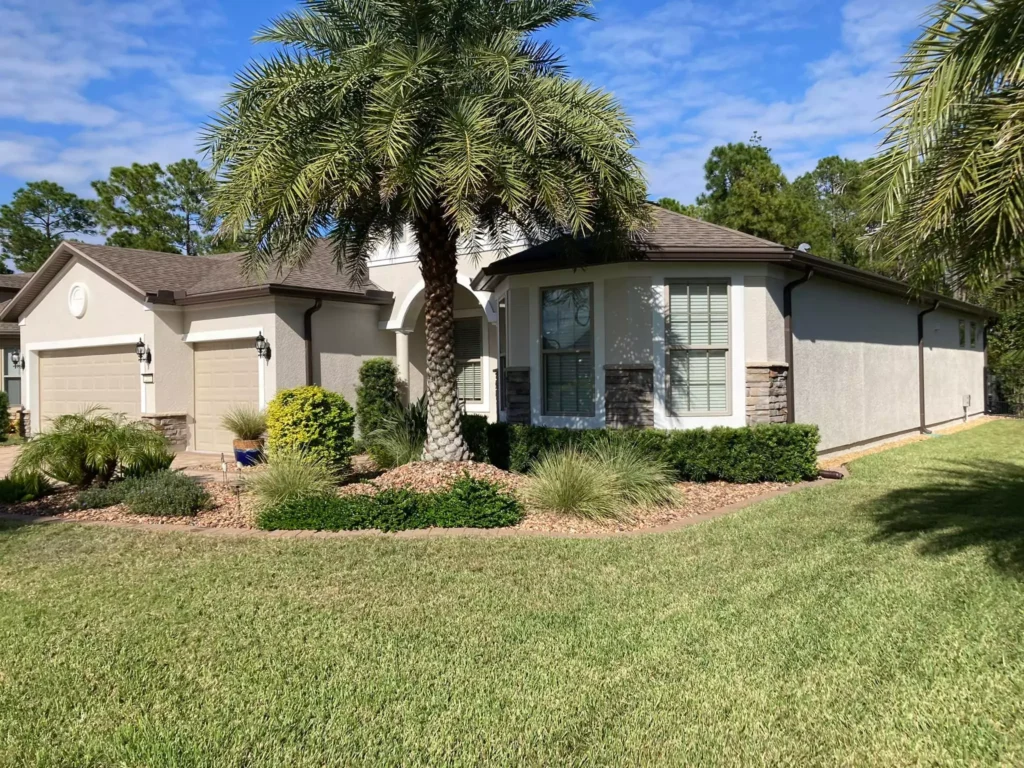
Natural Tan also works nicely outdoors. In bright sunlight it appears much lighter and more muted (almost creamy) due to its high LRV. This means a Natural Tan exterior can look like a pale tan or off-white facade, which often enhances curb appeal on a modern or farmhouse-style home.
For example, designers note that Natural Tan on siding feels light and fresh, and it pairs beautifully with crisp white or charcoal trim for contrast. Be aware that in bright sun Natural Tan will look lighter than indoors, so it’s a good idea to test a patch outside.
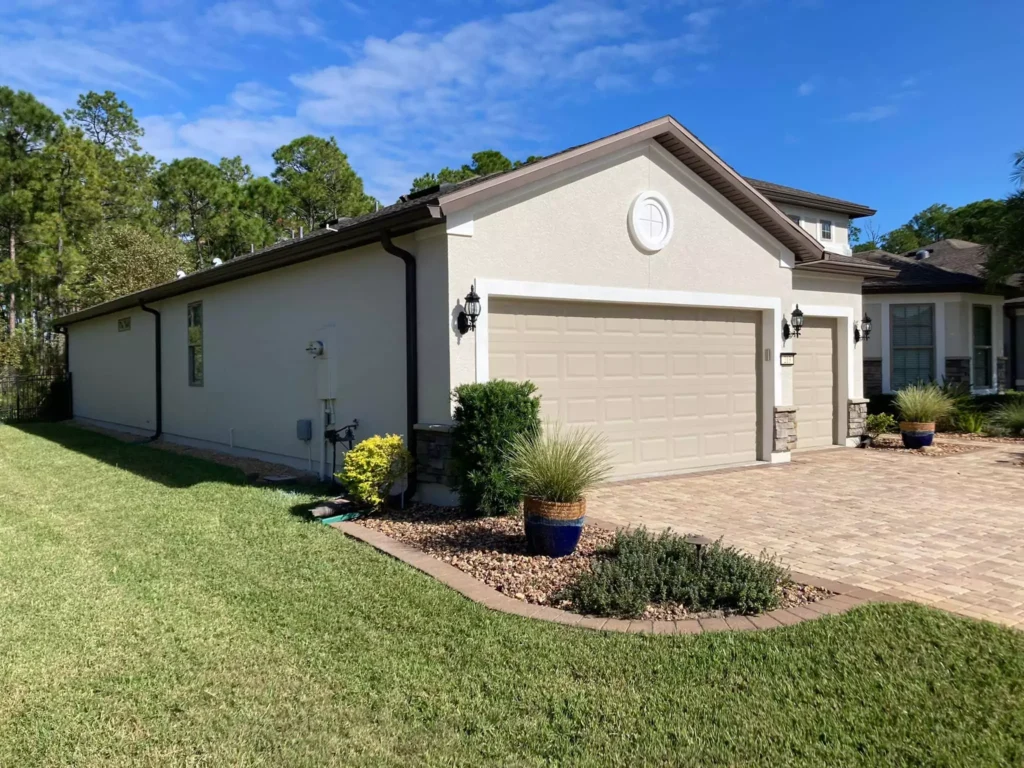
In any case, its subtle warmth makes a home feel welcoming, and it complements roof or stone colors well (especially natural grays, browns or black accents). Overall, Natural Tan is considered a safe, warm exterior choice that reads as a sophisticated creamy tan in daylight.
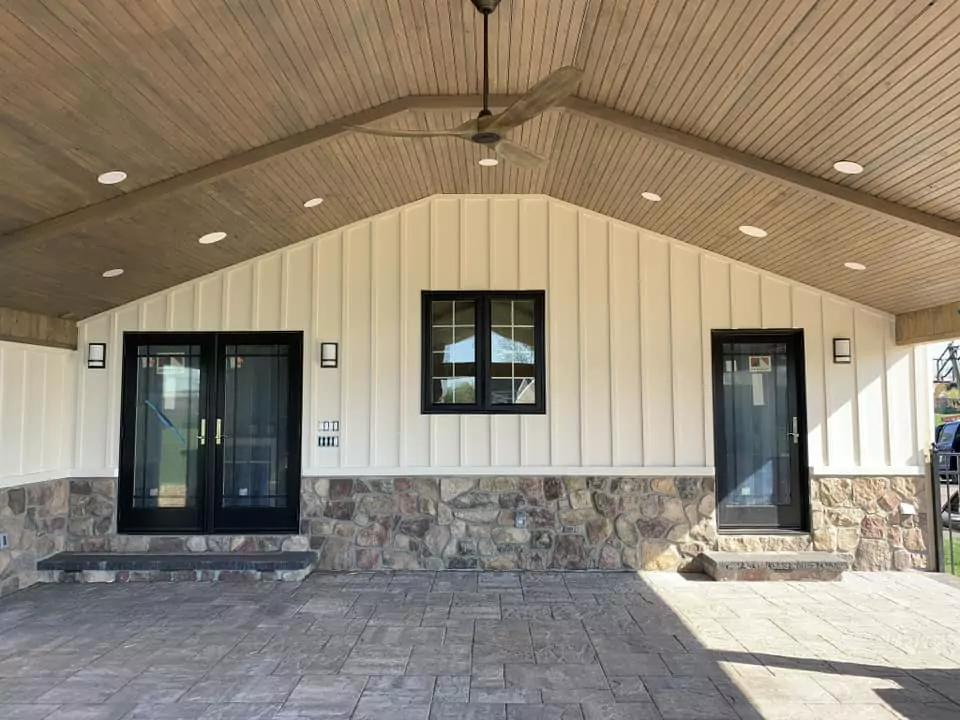
Coordinating Colors for Natural Tan SW 7567
Soft Palette (gentle neutrals and pastels)
Alabaster (SW 7008): A warm, creamy white. It brightens the space and subtly enhances Natural Tan’s warmth.
Creamy (SW 7012): A soft off-white with a hint of warmth. It pairs like a smooth gradient with Natural Tan, keeping the room light and airy.
Accessible Beige (SW 7036): A warm greige that is slightly deeper than Natural Tan. Using it on trim or adjacent walls creates a gentle monochromatic look.
Repose Gray (SW 7015): A light gray-beige. Its softness and slight coolness balance the tan. (Repose Gray is often recommended as a neutral companion to tan colors.)
Sea Salt (SW 6204): A pale green-gray. As a soft accent, it adds a hint of color while still blending harmoniously with Natural Tan.
Bold Palette (striking contrasts)
Naval (SW 6244): A deep navy blue. This bold color creates a dramatic contrast against Natural Tan, making the tan appear cozier. Navy accents (pillows, a feature wall, a front door) really pop.
Urbane Bronze (SW 7048): A dark, rich bronze. Using this on an accent wall or exterior trim gives a sophisticated, moody contrast with Natural Tan.
Iron Ore (SW 7069): An almost-black charcoal. It provides maximum contrast; together with Natural Tan it gives a modern, high-contrast look.
Gauntlet Gray (SW 7019): A dark neutral gray. It’s another strong contrast option that keeps the pairing warm (not blue-gray).
Cavern Clay (SW 7701) or Rookwood Red: Deep terra-cotta or red accents can also make Natural Tan “pop” and add earthy warmth.
Muted Palette (subdued, harmonious tones)
Repose Gray (SW 7015): A popular greige that is only slightly darker than Natural Tan. It creates a soft, cohesive look when used together.
Accessible Beige (SW 7036): A widely used greige. Though close in depth to Natural Tan, it’s a touch grayer; together they form a warm neutral scheme.
Agreeable Gray (SW 7029): A light gray-beige. It’s called a “greige” for good reason, and pairs unobtrusively with tan.
Kilim Beige (SW 9103): A muted orange-beige. It has more color than Natural Tan but remains very soft.
Soft Sage or Clay Tones: Muted green-greys (like Dried Sage SW 6179) or clay-beiges (like Authentic AF-75 in Benjamin Moore) will blend quietly without strong contrast.
FAQs
Q: What are the most popular Sherwin-Williams tan colors?
In addition to Natural Tan (SW 7567), common favorites include Canvas Tan (SW 7531), Neutral Ground (SW 7568), Wool Skein (SW 6148) and Sandbar (SW 7547). These are well-loved warm neutrals.
Another top seller is Accessible Beige (SW 7036), which straddles beige and greige. (Accessible Beige, in fact, has ranked in SW’s Top 20 colors for years.)
Q: What are the best Sherwin-Williams gray-beige (greige) colors?
Popular greige choices include Agreeable Gray (SW 7029) and Repose Gray (SW 7015) – both are light gray-beiges frequently recommended by designers.
Other top greiges are Gossamer Veil (SW 9165) (a very light greige) and Alpaca Gray (SW 7022). Accessible Beige (SW 7036), while more beige-leaning, is also often cited as a warm greige. These colors share the warm-vs-cool balance that makes greige so versatile.


